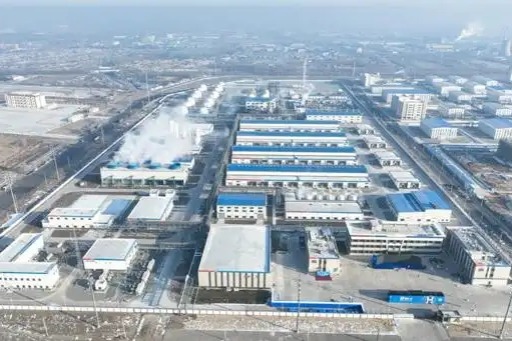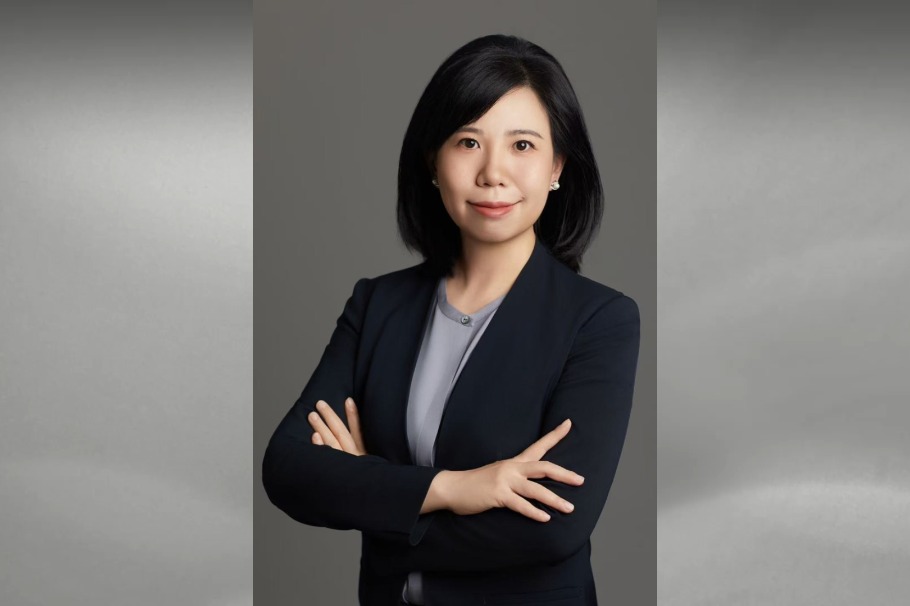Combined efforts spur fight against virus
Mainland, Taiwan and Hong Kong medics join forces

At least 22 Chinese medical workers have died in the fight against the novel coronavirus pneumonia outbreak, with more than 3,000 becoming infected.
However, thousands more are involved in the front-line battle against the epidemic-some of them at two hospitals founded by a Hong Kong businessman in Wuhan, Hubei province, the contagion's epicenter.
On Jan 23, when the city was placed under lockdown one day before Lunar New Year's Eve, Tse Chun-ming, who founded the two hospitals, bid farewell to his family in Hong Kong before leaving for Wuhan.
The 62-year-old headed for Wuhan Asia General Hospital, which he founded in 2018. Early last month, the facility became a designated hospital to treat patients with novel coronavirus pneumonia.
About 700 patients had been admitted to the facility by late last month, with 450 still hospitalized.
Meanwhile, Wuhan Asia Heart Hospital, founded by Tse in 1999, is screening for suspected cases by providing outpatient services for patients with fever.
Tse said: "I am the head of these hospitals. I believe that my presence will help boost the confidence of our medical staff."
More important, Tse said he must visit both hospitals to manage and allocate resources, including medical supplies, transportation and meals for more than 1,000 employees.
On Feb 11, Vice-Premier Sun Chunlan visited Wuhan Asia General Hospital and said it was making a major contribution to the fight against the epidemic.
The hospital symbolizes the joint efforts made by people in Hong Kong and on the Chinese mainland to tackle the virus, Sun said.
Wuhan accounts for most of the cases reported globally, and as of Monday, 4,471 patients remained in critical condition in the city. However, 59,897 people in the country have recovered from the disease, thanks to the collective courage and efforts of medical workers and entire communities nationwide.
At Tse's two hospitals, doctors from the mainland, Hong Kong and Taiwan are working together to combat the outbreak.
Living at hospital
Man Ning, chief physician and head of the Pulmonary and Critical Care Medicine Department at Wuhan Asia General Hospital, is caring for 25 critically ill patients, assisted by 12 doctors.
Man, 43, has been living at the hospital since early January. He has not taken a day off since the outbreak emerged, working from 8 am to midnight. He sleeps in the duty room in a sterile area, and if there is an emergency, nurses wake him whenever he is needed.
"I haven't set foot anywhere farther than 1 kilometer from the hospital since early January," he said.
Man's department started receiving increasing numbers of patients with fever at the start of January. On Jan 7, he increased vigilance and put suspected cases under quarantine.
A veteran of the fight against severe acute respiratory syndrome, or SARS, in 2003, he knew how to proceed.
"However, the pathogenicity (the potential capacity of certain species of microbes or viruses to cause a disease) and ways of transmission were brand new to us. This created huge difficulties for our work," Man said.
With the number of fever cases mounting, Man scrapped plans for a Spring Festival family reunion in Huangshi, Hubei. He took daily necessities from his home to the hospital, where he has remained ever since, along with his team.
"It's just safer for our families that we stay in the hospital," he said.
Seven of the doctors in Man's department are women in their 30s. "They have stayed strong in front of me, but I know that they have cried sometimes when I'm not around," he said.
"The epidemic does not merely cause people physical pain, it weighs them down mentally."
Man's parents are in their 70s. He has an 18-year-old daughter in her final year of high school who is preparing for the national college entrance exam, or gaokao. His family, including his wife, is staying in Huangshi, just over 80 km southeast of Wuhan.
Concerned about his parents, Man calls them every day. Elderly patients with underlying conditions such as heart disease or hypertension are among those at the highest risk of infection and death from the virus.
Seven of Man's patients have died. Most were elderly with pre-existing health issues. Some of these patients' families decided to spare them the pain of invasive treatment, such as intubation, Man said.
To prevent possible transmission of the virus, no traditional funeral rites or gatherings can be held for patients who die, according to a special regulation issued by the National Health Commission. The remains of those who die must be sterilized and sealed immediately by medical workers. Bodies are transported to the nearest funeral home by a designated route and are cremated on arrival.
Patients who succumb to the virus in isolation wards never get to see their family members before they die, except through video calls, which are sometimes assisted by nurses. This practice has been adopted by Man's team to lift patients' spirits.
"Mental support is crucial for patients' recovery. It helps them get through the difficult times," he said.
Man noted that the number of new infections has slowed, but all 450 beds at the hospital remain occupied. "Asymptomatic patients who are infected could be potential spreaders of the virus. I remain worried about the situation," he added.
Raised in Wuhan, Man said he has never seen the city so deserted.
"Thousands of medical workers have come to Wuhan. We won't resign ourselves to giving up. We need to put the city back on track as soon as possible.
"I'm not a hero. I'm just doing what I'm supposed to do," added Man, who has been a doctor for 23 years.
To date, as a result of the protective measures that have been taken, no staff members in Man's department have been infected by the virus.
He called on the government and various sectors in the country to ensure that sufficient supplies of protective gear reach medical workers "so that we can be more at ease in fighting the 'war'".
Heavy protection
Since the epidemic emerged, medical workers have faced serious shortages of vital equipment, including face masks, goggles and protective suits.
As a result, they have been asked to wear protective clothing throughout their shift, which can last up to eight hours in an isolation area. Workers drink little water while on duty, to avoid trips to the bathroom.
Lin Tzu-yung, from Taiwan, a resident doctor in the Cardiothoracic Surgery Department at Wuhan Asia General Hospital, has been caring for mild cases of infection since all specialist services at the facility were suspended early last month.
After taking a crash course, Lin jumped straight into the battle against the virus, working shifts of at least nine hours, including overnight duty. He gets a day off every three days.
With only two doctors per shift, Lin has to remain in protective clothing for at least four hours a day, leaving him sweating from head to toe.
He said a protective suit is light, but extremely airtight. Along with a face mask and goggles, it is hard to breathe in such a suit, and medical procedures, or even walking, become more difficult.
Lin also said his nose became scratched and bruised after he wore his face mask for too long.
Overall, the hospital is ensuring that medical workers get sufficient rest and nutritious meals to fortify their immune system and reduce the risk of infection.
Although scared of becoming infected, Lin believes the shortage of supplies can be remedied.
He said it is even more important to find ways to relieve frontline medical workers' stress, especially among those who are married and have children.
Born in Taiwan, Lin started his university studies in Wuhan when he was 18. Spending the first half his life in Taiwan before working in Wuhan, he calls the city his "second home".
Like his peers, he abandoned plans to return home for Spring Festival in Taiwan.
After Wuhan was locked down, the authorities suspended all public and private transportation.
Living alone in a rental apartment, Lin travels to work in a private car provided to medical workers for free by volunteers or a ride-sharing company.
Fully prepared
Wu Shaowei, a 37-year-old physician working in the coronary care unit at Wuhan Asia Heart Hospital, has been unable to return to his home in Hong Kong.
Although not assigned to care for infected patients, he has to remain in protective clothing in the isolation ward, as critically ill patients with heart disease are at risk from the virus.
Due to a shortage of staff members, Wu had to work round-the-clock before being given four days' off. But even when he is not working, he is on call for emergency operations, such as installing a coronary stent.
His 4-year-old son and his wife are in Guangdong province, while his parents are at home in Hong Kong.
When he is not at work, Wu cooks Cantonese-style food and listens to Cantonese music. "As a doctor, I am mentally prepared to take on my responsibilities," he said.
"There are just too many patients. The virus is everywhere. Even though you are fully protected, you still have a chance of becoming infected."
His family worries about him, but can do little apart from talk to him every day via video calls. "What can you do?" he said, before pausing and sighing.
"Some critically ill patients who are in their 80s are very pessimistic," he added.
Tse, founder of the two Hong Kong-invested hospitals, said that to a certain degree, everyone had been too slow to respond to the outbreak. Only when Wuhan was locked down on Jan 23 did they realize how serious it was and started to increase their vigilance.
"I think that if people had taken precautionary measures earlier, the situation might not be so bad," he said.



Today's Top News
- Experts: Lai not freedom fighter, but a pawn of the West
- Hainan evolves as gateway to global markets
- Opening up a new bridge between China and world
- Tour gives China-Arab strategic trust a boost
- China accelerates push for autonomous driving
- Opening of new gateway can help foster global economic and trade cooperation






























